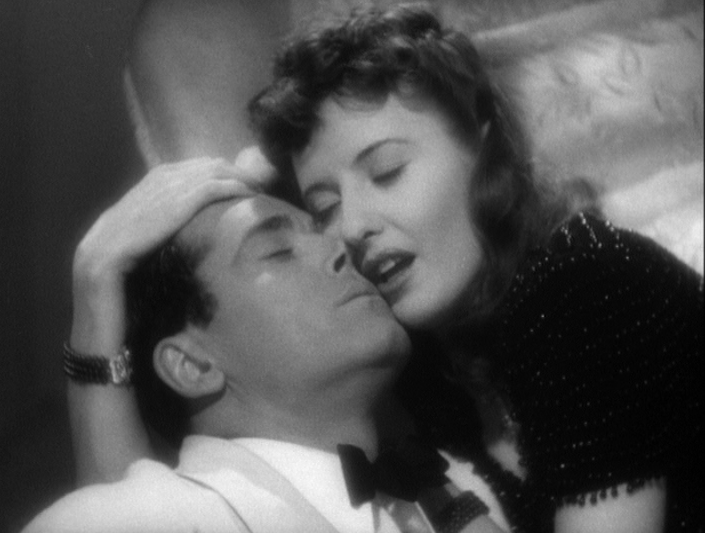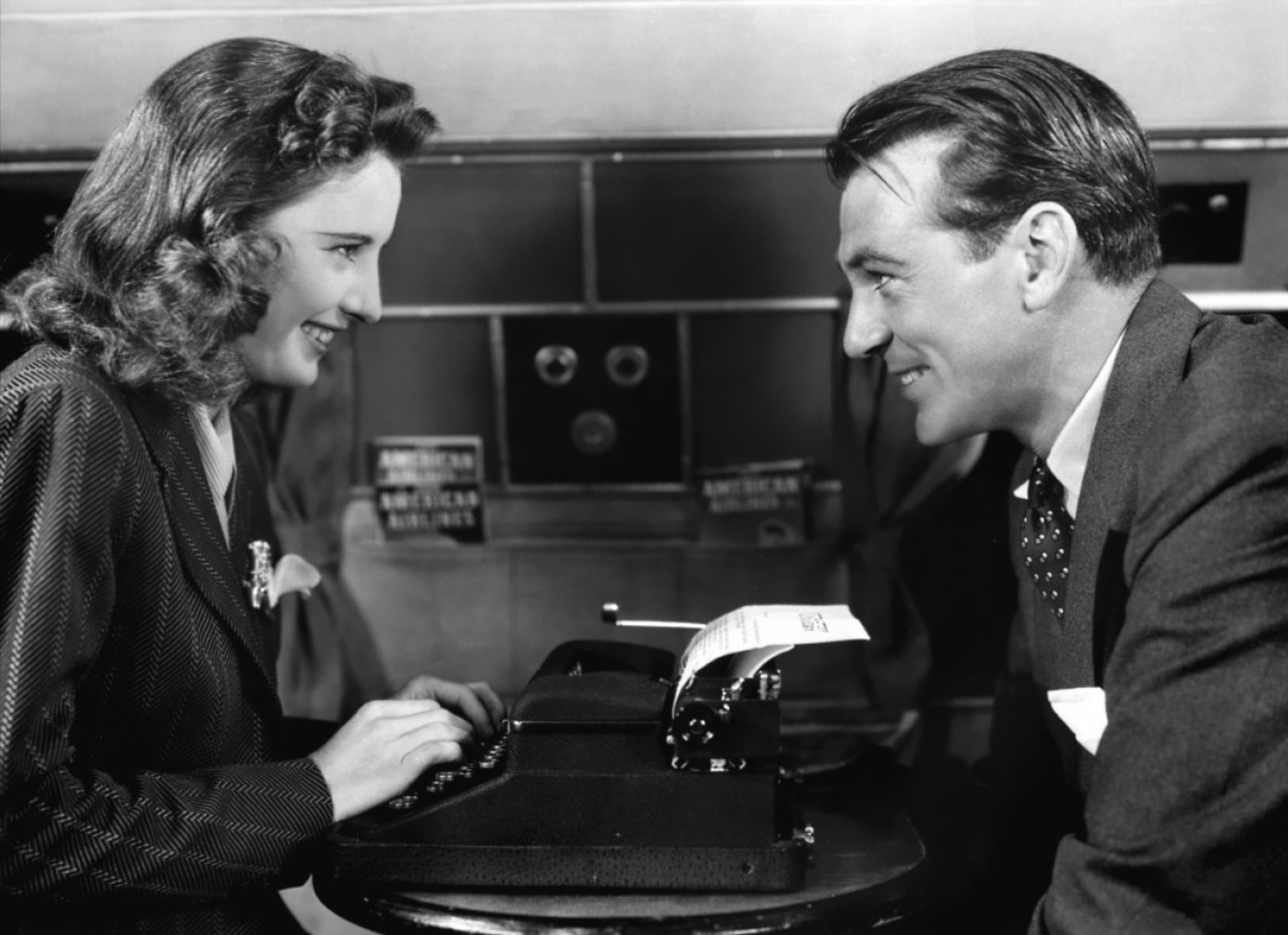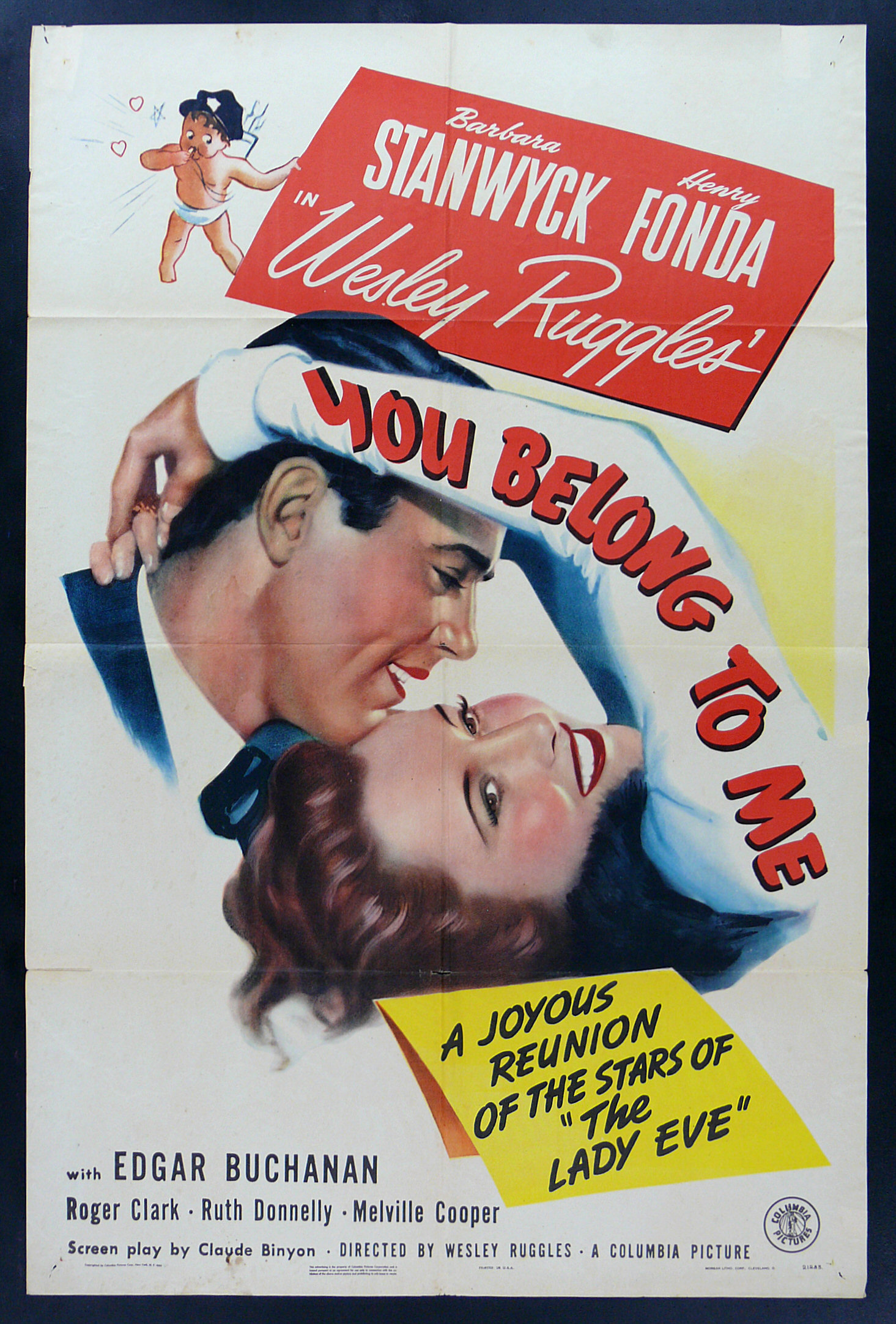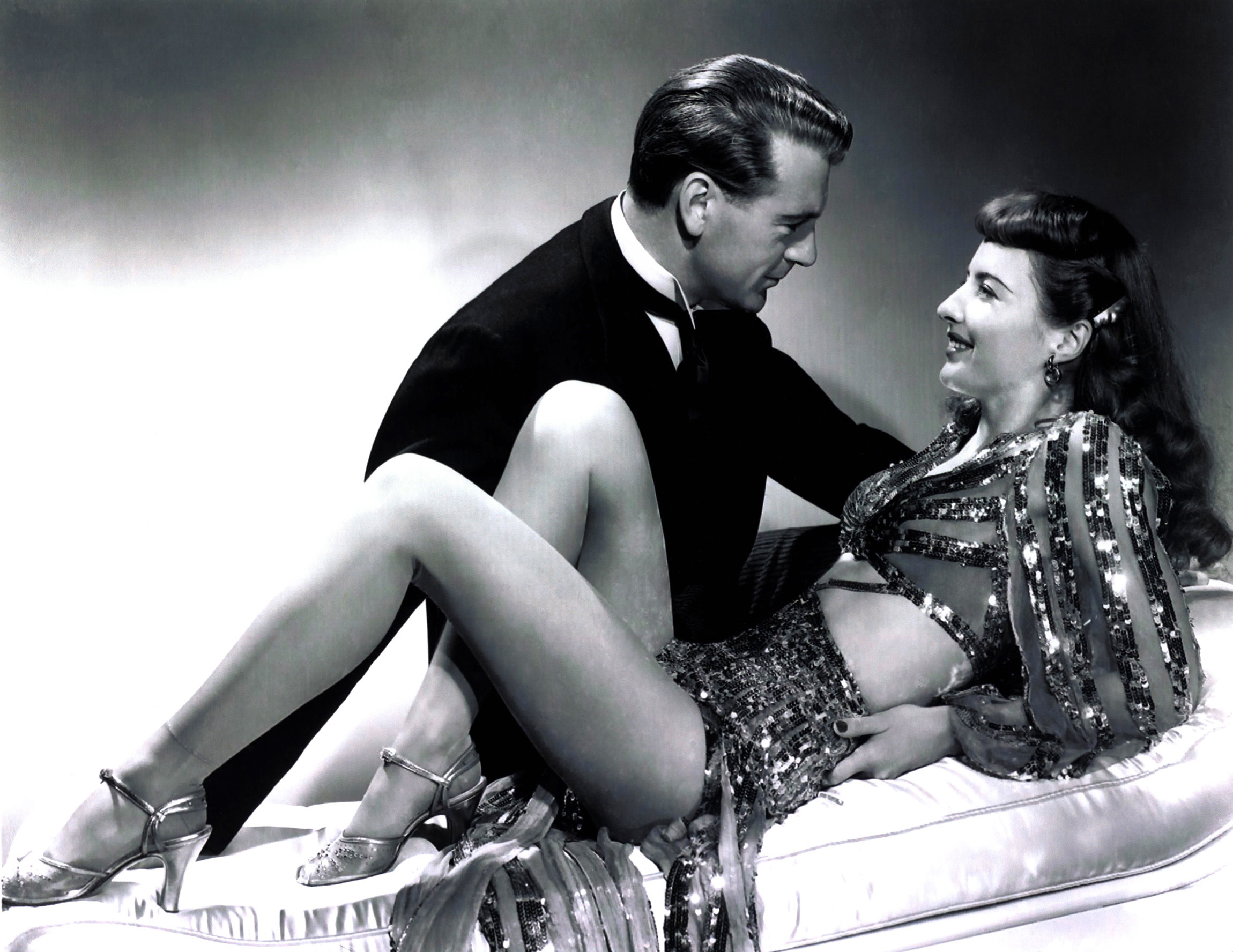It's unofficially 1941 Week. Here's Abstew on the year's greatest actress...
See anything you like?
Purrs Barbara Stanwyck's con artist Jean Harrington to Henry Fonda's smitten ale-heir-turned-Ophiologist Charles Pike in Preston Sturges' 1941 screwball classic, The Lady Eve. The question is asked as the contents of her wardrobe are on display (and the sultry delivery let's us know that Jean is hardly talking about the fuzzy slippers), but Stanwyck might have easily been asking movie-goers the same thing regarding her stellar body of work that year. In a quartet of successful films (The Lady Eve, Meet John Doe, You Belong to Me, and Ball of Fire), Stanwyck earned her second Oscar nomination, starred in a film Time magazine named one of the 100 greatest movies of all-time, and became one of the highest paid actresses in Hollywood. Unquestionably, 1941 would prove to be a peak Stanwyck year.

Stanwyck has claimed that she was not a natural comedienne, but those who have seen her work in The Lady Eve would beg to differ. It's apparent from her first scene, a meet-cute with Fonda as she clunks an apple on his head as he boards the ship she and her card shark father are on–waiting to swindle him out of his millions–that Stanwyck is game for fun. And Stanwyck with her wise-cracks (and absolutely stunning in midriff-baring Edith Head creations) gives an effortless performance full of humor and bite.
Writer/Director Sturges (who was also having a good year with this film and Sullivan's Travels), having worked with Stanwyck previously on Remember the Night the year before, knew that Stanwyck was fully capable of delivering the comedic bits. And Stanwyck thoroughly sells them. I absolutely adore the scene where she gazes on Fonda through her compact, narrating the inner thoughts and imagined conversations of the women around him clamoring for his attention. Her rapid fire delivery shows a razor sharp mind and carefully tuned delivery that may not have been the weapon of choice for Stanwyck but certainly showed that it was a tool she clearly could handle.
But the brilliance of Stanwyck's work is how she fully fleshes out the character, making her real and believable amid the silliness. In the scene where Fonda's character confronts Jean about her swindling past, Stanwyck uses the hurt of a woman who has always been afraid to lay her cards out on the table to skillfully break our hearts and root for her. For once she let her guard down and allowed herself to love, but his rejection of her true self is shattering and just the catalyst she needs to get back at him with her Lady Eve Sidwich character. The deception would ordinarily make Jean come across as mean-spirited, bitter, even petty, but Stanwyck has so thoroughly seduced us along the way that any comeuppance for Fonda seems like his just reward.

Eve may stand as Stanwyck's best work of the year (and arguably of her entire career), but her biggest box office success of 1941 was her fifth and final collaboration with director Frank Capra, Meet John Doe. Stanwyck stars as Ann Mitchell, a newspaper reporter that is fired from her job in the first scene of the movie. With one last article to write (and in an attempt to win back her job), Ann writes a fake suicide note from a man claiming that the state of society has driven him to this fate. Readers, identifying with Doe's feelings, demand he reconsider and Ann hires a homeless former baseball player (simple everyman Gary Cooper) to play the part of John Doe and spread the message of learning to love thy neighbor.
The film is way too corny, contrary, and kinda bizarre. Stories from characters seem to go on endlessly, including one from the head of The John Doe Club that seems to last half an hour and a retelling of a dream from Cooper about spanking Stanwyck's Ann that becomes downright kinky but never seems to carry any significance at all. Stanwyck plays her part with her typical moxie and makes the softening of her hardened career girl seem plausible. And with her fine comedic work in the other films of that year, it's nice to see her range on display within this misguided hokum.
 Stanwyck's next film teamed her up once again with her Eve co-star, Henry Fonda, in another romantic comedy called You Belong to Me (no, not based on the Taylor Swift song). Stanwyck plays a doctor named Helen Hunt (I wonder if the Oscar winner's parents were a fan of the film) that meets Fonda, playing another millionaire character, after a ski collision. The two seem to making a habit of violent greetings. After the two marry, Fonda becomes jealous of Helen's male patients and after he takes a job she becomes a housewife. But knowing how much his wife loves her work, he buys a hospital and puts Helen in charge. Although the least well-known of her four films from 1941, it was well-received at the time of its release and Stanwyck got to play a professional woman allowed to love her job as much as her husband. Kind of unthinkable for the time period, but then again, Stanwyck has always seemed ahead of her time.
Stanwyck's next film teamed her up once again with her Eve co-star, Henry Fonda, in another romantic comedy called You Belong to Me (no, not based on the Taylor Swift song). Stanwyck plays a doctor named Helen Hunt (I wonder if the Oscar winner's parents were a fan of the film) that meets Fonda, playing another millionaire character, after a ski collision. The two seem to making a habit of violent greetings. After the two marry, Fonda becomes jealous of Helen's male patients and after he takes a job she becomes a housewife. But knowing how much his wife loves her work, he buys a hospital and puts Helen in charge. Although the least well-known of her four films from 1941, it was well-received at the time of its release and Stanwyck got to play a professional woman allowed to love her job as much as her husband. Kind of unthinkable for the time period, but then again, Stanwyck has always seemed ahead of her time.
The film that brought Stanwyck her second Oscar nomination (from a career total of four–without a win) was this Billy Wilder-penned take on Snow White and the Seven Dwarfs directed by Howard Hawks, Ball of Fire. Amazingly, Stanwyck was the fifth choice to appear in the film after Carole Lombard, Jean Arthur, Lucille Ball, and Ginger Rogers were all offered the role. Stanwyck is a sexy delight as one of the best named characters in all of film, Sugarpuss O'Shea, a nightclub singer that takes up with a group of Professors when she needs a place to avoid the police who want to question her about her mobster boyfriend. The youngest professor, played by Gary Cooper (again. 4 films and only 2 leading men...) specializes in words and is fascinated by the slang that comes out of Sugarpuss' mouth. Naturally she falls for him (the jerk), since he's the first man that's ever tried to move in on her mind.
Stanwyck proves once again that even if comedy didn't come naturally to her, she certainly never let you see it. Spouting off slang that seems to be made-up only for the movie ("screw, scram, scraw"), Stanwyck delivers each line with her Brooklyn sass. Sensational in her first appearance in the film, signing a song called "Drum Boogie" (although her signing voice was dubbed by Martha Tilton) and decked out in a sequined gown with a skirt seemingly modeled from a car wash, Stanwyck (perhaps recalling her earlier days as a Ziegfeld Follies dancer) has never been as slinky and alluring on screen. Her best scene combines her comedic skills with her sensuality when she playfully seduces Cooper's Professor Potts (Pottsie) by standing on a stack of books and showing him just what yum yum is (it's kissing, by the way).

The film suffers when Stanwyck's not on screen and she elevates the film with her presence. Her nomination that year should have come from her superior work (and a far superior movie) in The Lady Eve, but since Ball of Fire was released in late December to qualify for Oscars, it was still fresh on everyone's mind (Eve had been released all the way back in February, which just goes to show that some things never change when it comes to Oscar.) But the nomination was really a way of honoring her entire body of work for the whole year and even if she lost the award to Joan Fontaine in Suspicion (who seemed to be receiving it as consolation for losing the year before for her exceedingly better work in Rebecca), there's no question that the real Best Actress of 1941 was Barbara Stanwyck.